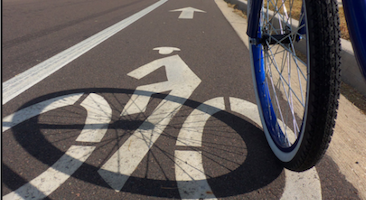
Cities throughout the United States are transforming their infrastructure with a modern idea on roadways and sidewalks. Designed to promote the safe travel of people of all ages and means, plans entitled “complete streets” allow bikers, pedestrians, drivers, and public transportation to easily navigate the city. While sharing a singular mission statement, each city’s new layout differs greatly from the next. A larger urban environment may provide a complex network of paths for every conceivable form of travel, but a less populated environment would only need a central roadway and a parallel bike path. The goal is to find a balanced means of transportation for everyone.
How People Travel Today
According to the National Household Transportation Survey, Americans between the ages of 16 and 34 are driving less and seeking alternative means of getting around. Between 2001 and 2009, the streets began to be filled more with bicycles, pedestrians, and public buses. The reasons are not always ecological concerns. The AAA reports an average of 18 cents on the dollar spent on transportation (one would assume on gasoline and regular maintenance), which could be saved by finding other means. With such a variance in transport, traffic is not only more congested, but much more risky for those on foot or bike. But if the trend of citizens finding alternative means of transportation continues to rise and the United States does not adapt its infrastructure, the congestion problems could worsen. However, if the complete street model begins to take root, we can expect perks both economic and environmental.
Safety Benefits for Modern Travellers
A recent bicyclist safety study review shows that the presence of a bike path can help lower the chance of crashes related to automotive vehicles or roadways that result in injury or death. Furthermore, the significant impact of automobiles on total emissions (motor vehicles are responsible for over 80% of carbon monoxide) could be greatly reduced if Americans lessen their dependence on fossil fuels to travel. The risk drops as dramatically as 50%. A more thorough document, “Dangerous by Design”, reports that in the absence of accessibility presented by complete streets, over 40% more pedestrian fatalities occur than if walkways were available. The safety benefits of a balanced system are clear with such dramatic changes in statistics.
Healthy Solutions
A streamlined roadway system also means recreation for citizens in highly populated areas where they may not otherwise have the opportunity to exercise. This is especially important for lower or middle class citizens who do not own gym equipment or memberships. The modern diversified infrastructure facilitates a more active lifestyle in the face of issues like rising obesity in American youth and the general malaise that can accompany the lives of the elderly post-retirement. Complete streets offer urban symmetry; a walk to the grocery store could become the thirty minutes of recommended daily activity.
Implementation and Planning
Ohio’s Cuyahoga County is already on the road to making this dynamic shift. Other cities in the nation could, in fact, follow their example. Regional planners are pushing citizens to openly discuss the benefits and facts with elected officials, engineers, and designers. More than spreading information, county hopefuls are encouraged to pinpoint costs and roadblocks, and even begin implementing some form of publicity among its citizens. The complete street model requires cooperation between a number of different groups. If there is any hope of implementation it will come from the synergy of multiple municipal bodies and private cooperatives.
Thanks to Daniel Oines on flickr for the image used in this post.

